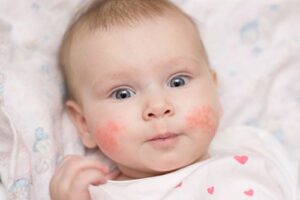SHARE WITH FRIENDS:
Diathesis or constitutional anomaly is a congenital feature of the child's body, which is prone to this or that disease. The term diathesis - means prone to any disease. This concept is not a disease or a syndrome, it is a characteristic of the child that he or she becomes susceptible to the disease. About 90% of chronic diseases in children occur against the background of diathesis.
Types of diathesis
There are about 20 types of diathesis in medicine. At the same time, there are individual manifestations that occur in some groups of children. The following types of children's constitutional anomalies are distinguished:
-
Exudative-catarrhal;
-
Nervous-arthritic;
-
Lymphatic-hypoplastic.
